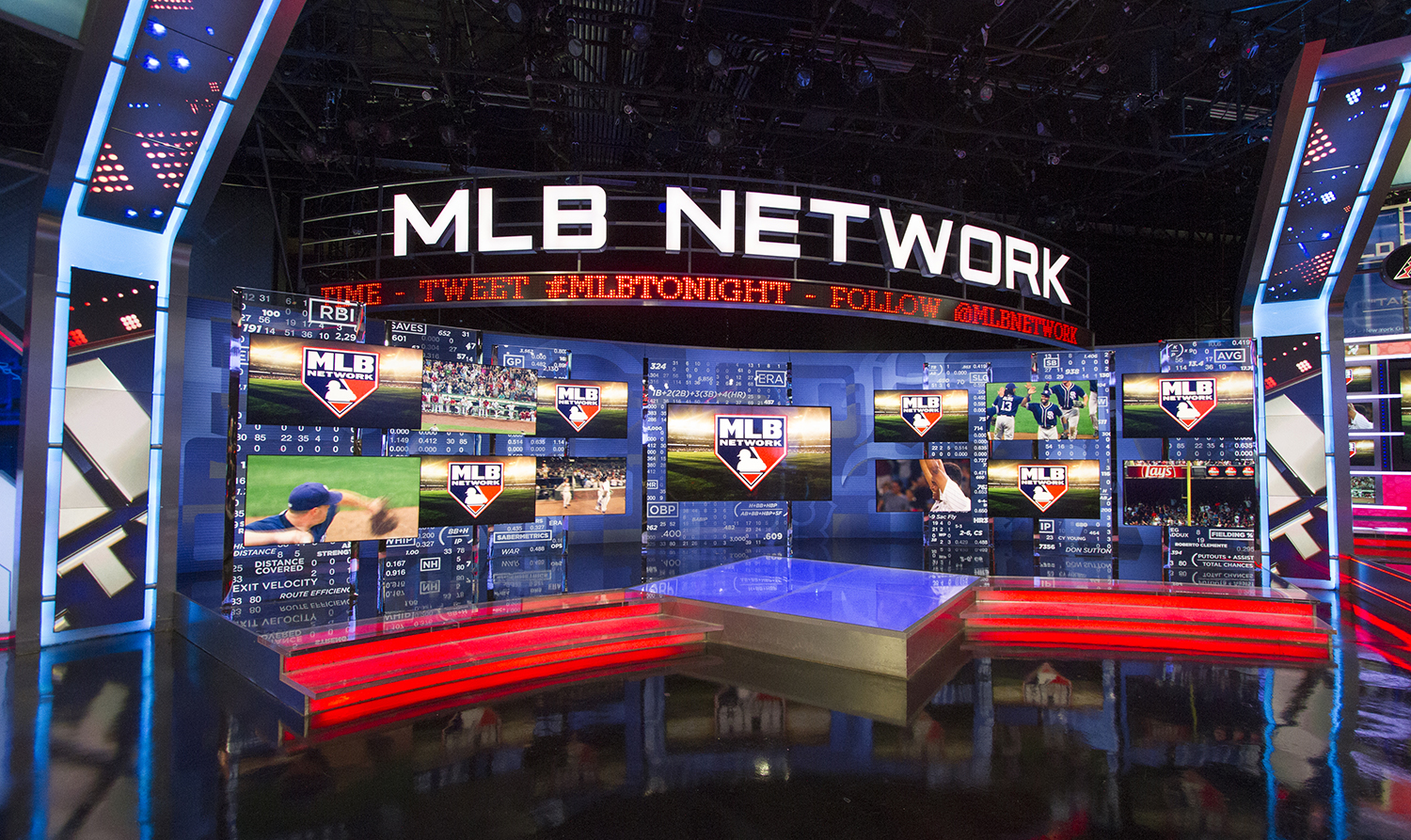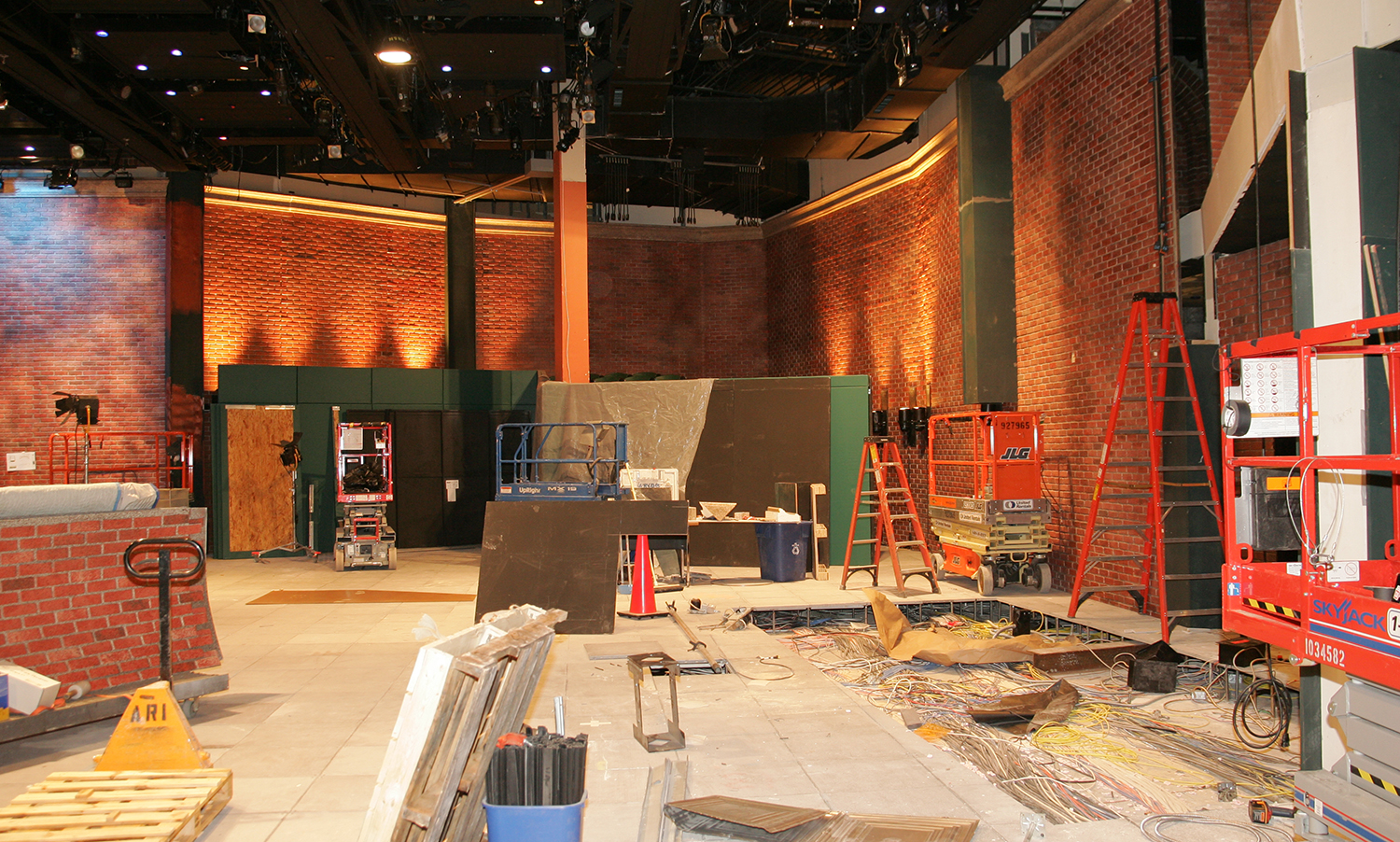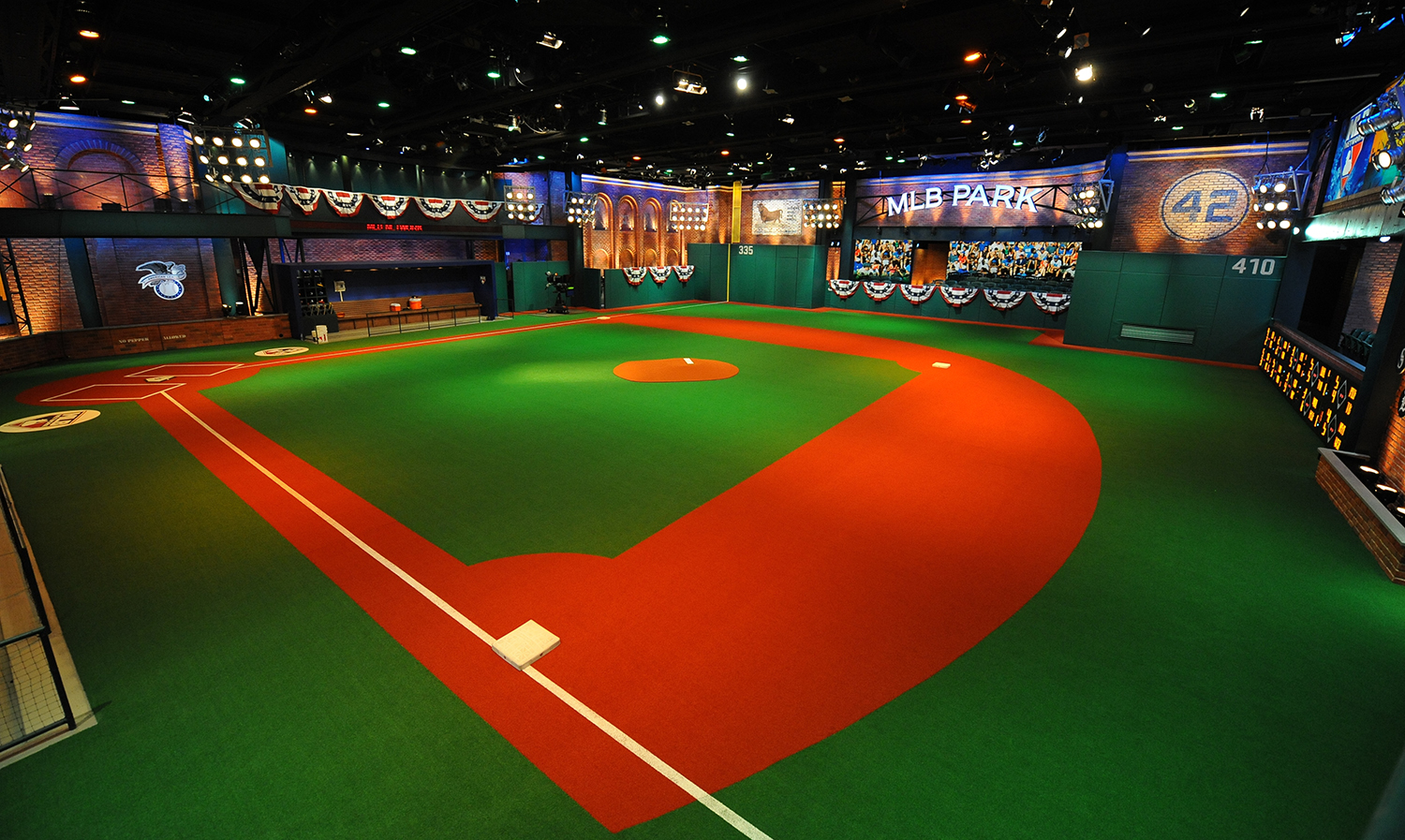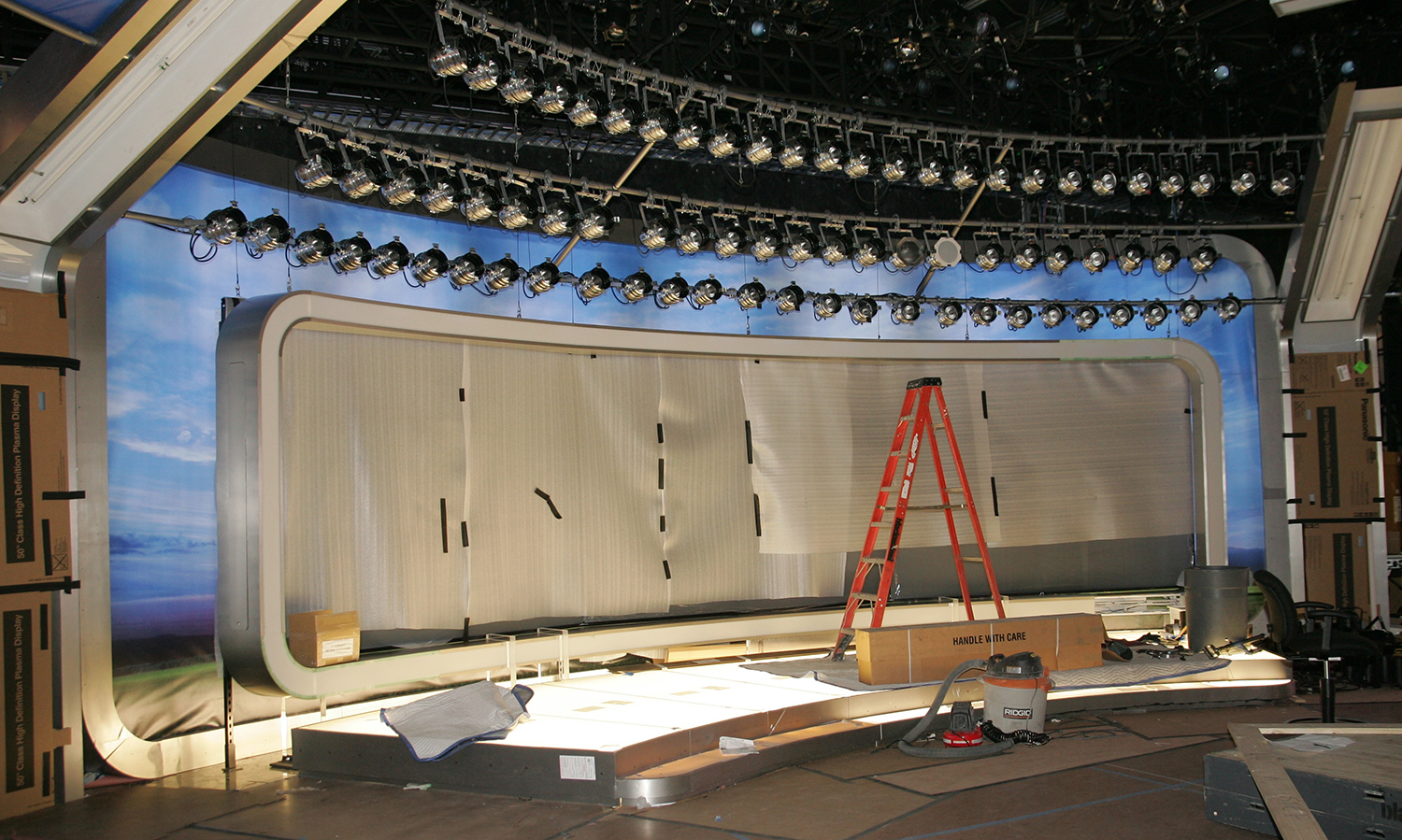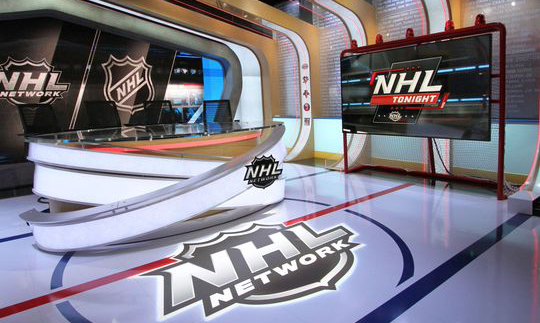A Decade of MLB Network: Baseball’s Network Thrives as Secaucus Facility Continues to Grow
Ten years after launch, MLB Network’s operation is only getting bigger
Story Highlights
Ten years ago this month, MLB Network officially went on-air in 50 million homes, marking the largest network debut in cable-TV history and the culmination of a monumental operational buildout. Despite an aggressive six-month timetable for the launch, MLB Network’s Secaucus, NJ, facility was up and running in time for its planned New Year’s Day 2009 debut.
In the decade since, both the footprint of the Secaucus facility and the content it churns out have grown exponentially. From two studios at launch, MLB Network’s home now has five studios spanning two buildings, and the network’s annual slate of live programming has grown from 1,638 hours in 2009 to more than 3,400 in 2018. In addition, the facility has housed all NHL Network operations since 2015.
Beyond the studio, MLB Network’s remote operations also have grown by leaps and bounds. Besides the weekly MLB Network Showcase game, the network has produced a dozen MLB Postseason games (beginning in 2012), carried three World Baseball Classics (splitting games with ESPN in 2009 and solely in 2013 and 2017), and established a significant onsite studio presence and now oversees the world-feed production at the MLB All-Star Game and World Series.
“From Day 1, everyone at MLB Network has been working towards the same goal, which is to put a phenomenal product on the air,” says MLB Network SVP, Operations and Engineering, Susan Stone, who was employee No. 10 in 2008. “I think what has differentiated MLB Network from the beginning and what we’re so proud of is that our on-air product is always at the forefront of everything we do. Our mantra is ‘What is this going to look and sound like on-air and how is this going to best serve baseball fans?’”
In the Beginning: Up and Running in Six Months
Just six months prior to launch date, Stone walked into what had been MSNBC’s headquarters and began plotting what was to come.
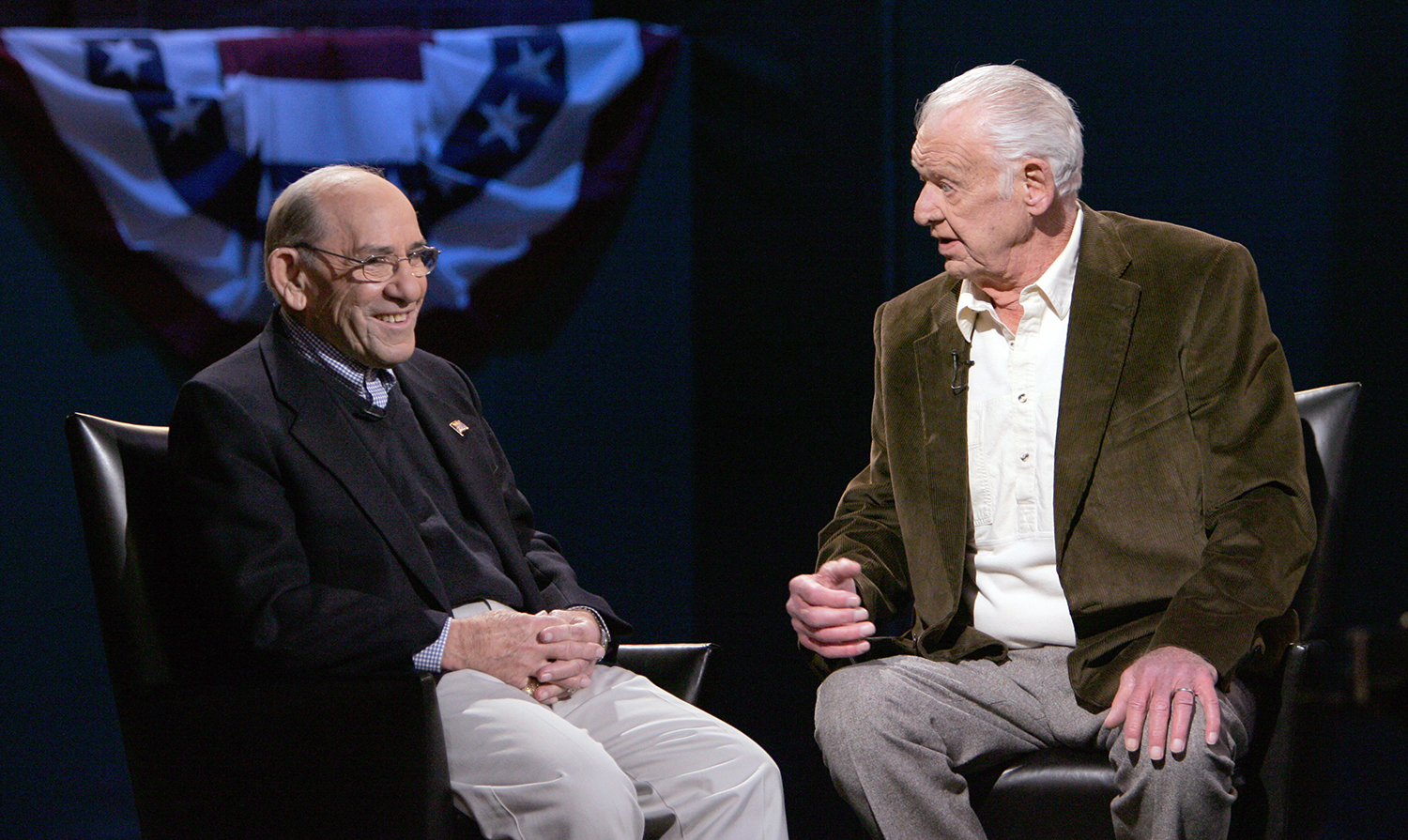
MLB Network debuted on Jan. 1, 2009, with Bob Costas interviewing Don Larsen and Yogi Berra inside Studio 42, followed by the first showing of Larsen’s perfect game in the 1956 World Series since its original broadcast.
“After MSNBC left, there was all this SD equipment just sitting around. It was really a ghost town,” she remembers. “It was hard to imagine that we would be able to launch an HD network in just six months.”
Despite the hurdles, MLB Network debuted as scheduled at 6 p.m. ET on Jan. 1, 2009, with the premiere of Hot Stove followed by a pretaped show featuring Don Larsen’s perfect game in the 1956 World Series (the first time the game had been shown on TV since its original broadcast). The piece — which featured Bob Costas interviewing Larsen and his battery mate, Hall of Famer Yogi Berra — had been taped two weeks prior, which meant that Stone and company had MLB Network’s Studio 42 up and running well before the launch date.
In February 2009, MLB Tonight debuted as the network’s flagship primetime program, and Quick Pitch launched early in the 2009 season. All the while, the MLBN operations and engineering teams continued to build out the Secaucus facility on the fly.
“It was a little bit of smoke and mirrors,” Stone notes. “We had so little time to launch that everything was not quite ready. We were still using a lot of tapes the first couple months just because all of our tapeless file-based workflows weren’t fully up and ready yet. We worked long hours and extremely hard,” she adds, “but nobody batted an eye. That was the kind of attitude that we had coming in. We just wanted to make great television, and we were working our butts off to make that happen.”
The Studio Operation in Secaucus: Feeding the Ever-Growing Content Beast
Over the past decade, MLB Network has grown from two studio shows — Hot Stove and MLB Tonight — to eight in 2019. The current lineup includes High Heat With Christopher Russo, The Rundown, MLB Now, MLB Central, Intentional Talk, and Quick Pitch (all of which saw year-over-year ratings increases in 2018).
During the season, the network has five crews producing 16 hours of live studio/game programming per day out of five studios. Add in NHL Network’s in-season average of seven hours per day, and Secaucus often churns out more than 20 hours of live programming daily.
After launching with Studio 42 (named in honor of Jackie Robinson) and Studio 3 (for Babe Ruth), MLB Network converted its mailroom into the ultra-flexible Studio K in 2012 (with a Ross Video Overdrive automated control room) as the home of its Hot Stove off-season morning show and several other MLBN programs. In 2015, the network took over the building next door and built Studio 21 (for Roberto Clemente), which is now home to MLB Central, MLB Now, and Quick Pitch. Prior to the 2016-17 NHL season, NHL Network erected a dedicated studio, The Rink, inside the same building as Studio 21.
“As always, it all starts with programming. As our number of shows has grown, we’ve continued to add new studios,” says Stone. “These were all massive construction and integration projects on very short timelines, but, today, they provide us with a lot of flexibility and allow us to be really nimble.”
Key members of the studio-operations crew over the years include SVP, Production, Dave Patterson; Coordinating Director Mark Deaver; VP, Studio and Broadcast Operations, Bob Mincieli; former VP, Engineering, Mark Haden; Senior Director, Studio Operations, Karen Whritner; Manager, Studio Operations, Michael Herbert; Director, Studio Engineering, Steve Rittenberg; Senior Manager, Studio Engineering, Curt Bose; and Senior Manager, Engineering Maintenance, Vince Lancellotti.
Covering Tentpole Events: The Draft, HOF, and BBWAA Awards
MLBN has leveraged its studios to exclusively televise annual events like the MLB Draft (held inside Studio 42 since 2009), National Baseball Hall of Fame announcement, and the end-of-year BBWAA Award announcements — turning them all into legitimate made-for-TV events.
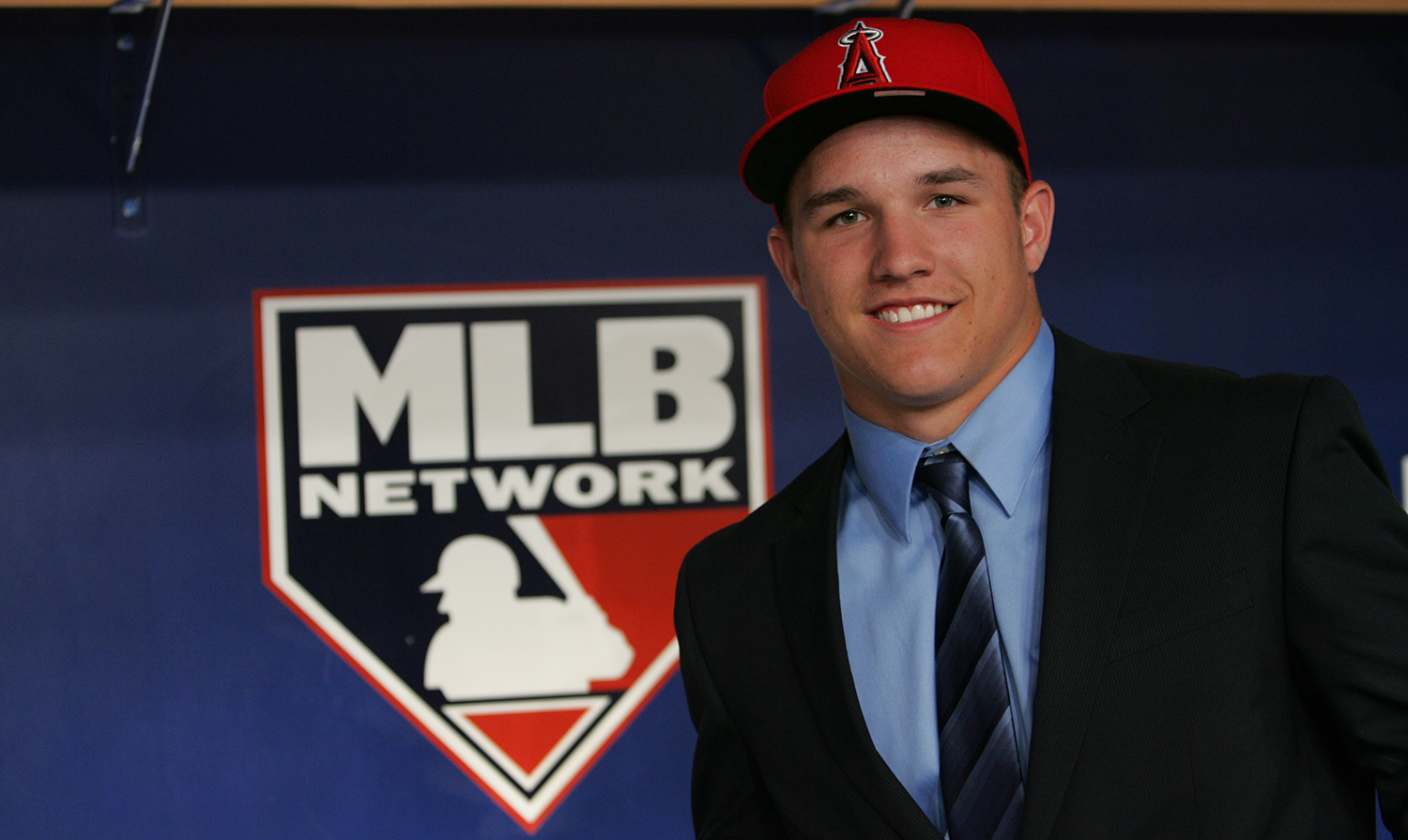
Future AL MVP Mike Trout in attendance at the first MLB Draft held inside MLB Network’s Studio 42 in 2009.
“It’s a credit to [SVP, Creative Services,] Chris Mallory and our creative-services staff and our production staff that these annual properties have grown into what they are today,” says Stone. “There’s nobody more passionate about baseball and who want to serve it more than the people who work here. It’s a real honor that the league and BBWAA can trust us to make them look good.”
NHL Network Joins the Party in Secaucus
MLB Network was dealt a curveball in August 2015, when the league and the NHL announced a first-of-its-kind six-year partnership that would result in NHL Network’s relocating its operations from Toronto to Secaucus. With less than three months to launch in time for the puck to drop on the 2015-16 season, MLBN repurposed part of Studio 21 to serve NHL Tonight to start the season, leveraging the solid infrastructure already in place.
“The timeline was extremely short on that one, but the great thing is, we were able to build on a lot of what we already had,” Stone explains. “For example, we were able to take our DIAMOND media-asset–management system and create a companion called DIAMOND on ICE. It was already built, so we just replicated and expanded it.”
Among the key members of the MLB Network engineering and IT teams playing a major role in the NHL Network integration were Senior Director, Post Production and Media Management, Tab Butler; Senior Director, IT Production Systems, Brian Perkins; Director, IT Broadcast Systems, AJ Hilchey; and Director, IT, Rich Ruiz.
Beyond the Studio: Remote Operations Drive Game, Onsite Studio
Although the Secaucus facility has proved to be a workhorse, MLBN’s production success goes well beyond its home base, thanks to the efforts of its remote-productions team.

MLB Network deploys multiple on-site sets for its annual coverage of the MLB All-Star Game and Home Run Derby.
The 26-game MLB Network Showcase package has grown into one of the most sophisticated baseball telecasts in the business, emphasizing deep analysis and extensively deploying the Statcast and PitchCast systems. In addition, MLB Network and DirecTV won the coveted George Wensel Technical Achievement Sports Emmy in 2017 for their 4K/HD dual-cast productions of MLB Network Showcase games.
“We’ve continually expanded our facilities and upgraded our [equipment] levels and tried plenty of new technologies as we’ve gone through the years,” says Stone. “But, for us, it’s really a joy just to be out there with Bob Costas and John Smoltz calling games. It doesn’t get much better.”
MLB Network got into the postseason action in 2012, exclusively producing two Division Series games every year since. “Those games have become our Super Bowl,” adds Stone.
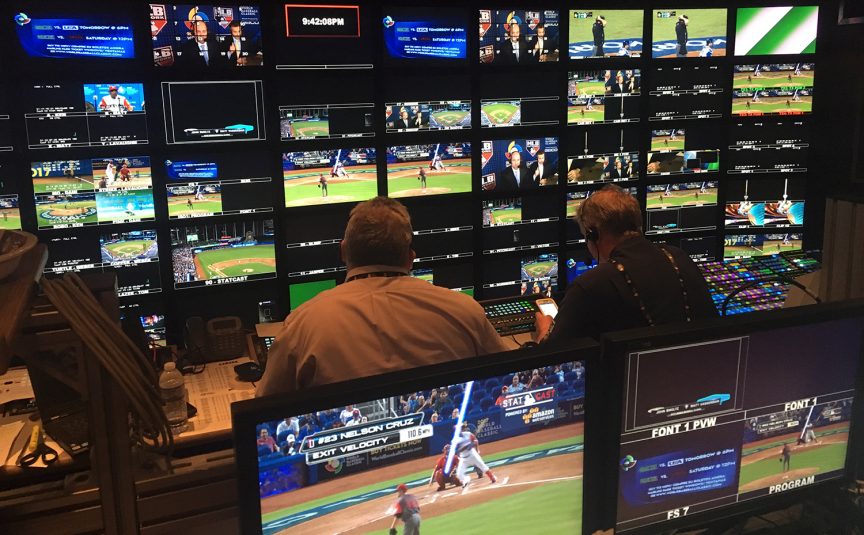
MLB Network’s remote operations continue to evolve along with its primary Game Creek Video mobile units
Every four years, the World Baseball Classic presents the network’s largest and most complex production operation: juggling production and transmission for dozens of games across the globe.
“From an operational standpoint, our team does an amazing job,” says Stone. “We have games going on starting in the morning from Japan and then from Korea and then in Mexico and then in the U.S. We have so many different time zones that we have to juggle.”
With its third WBC production in 2017, MLBN began overseeing both domestic and world feeds. The network is also now responsible for the world-feed productions at the All-Star Game and the World Series.
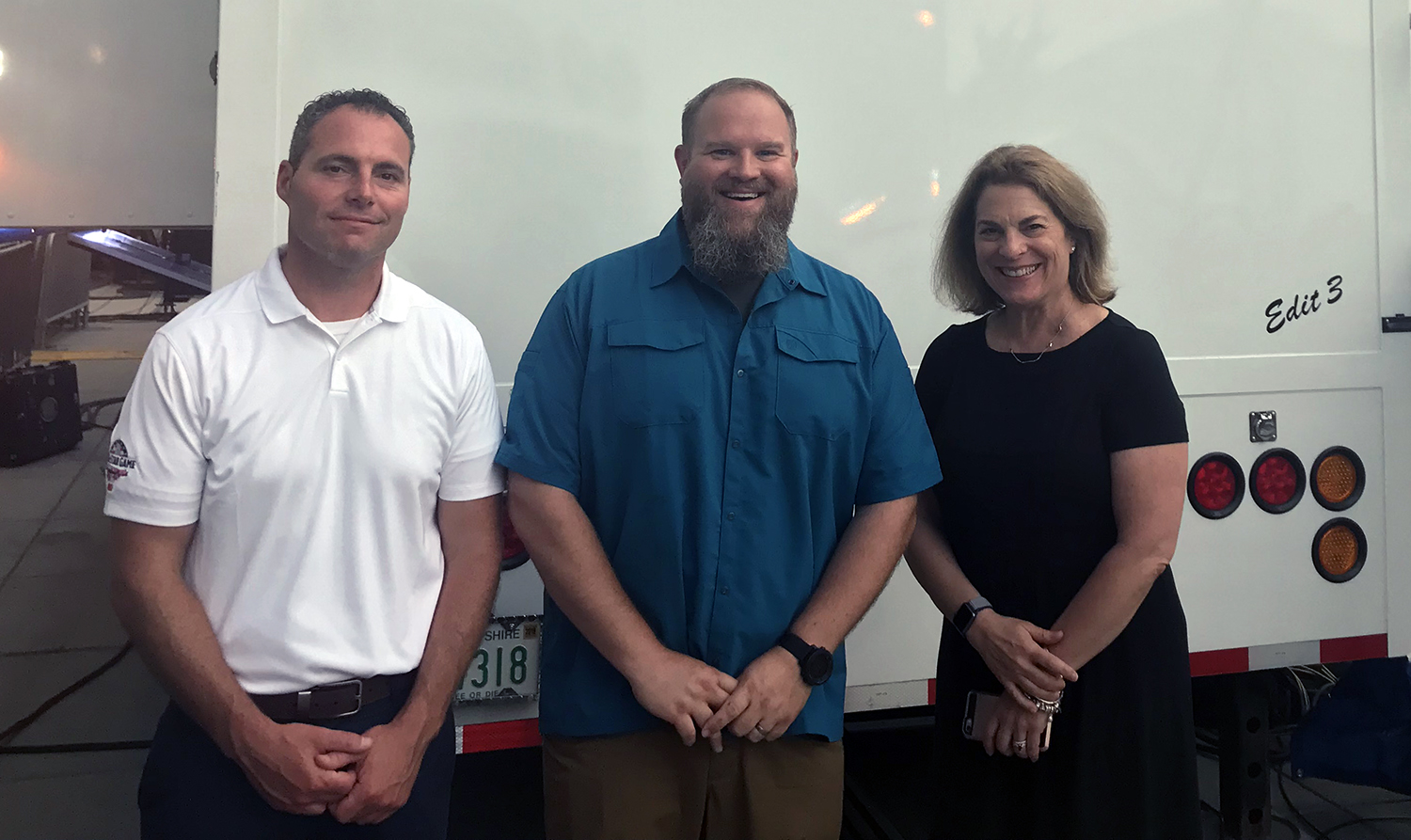
MLB Network’s (from left) Tom Guidice, Jason Hedgcock, and Susan Stone lead the ops and engineering efforts at major events like the MLB All-Star in Washington, DC (pictured).
MLBN may not be the primary domestic-rights holder for the All-Star Game and World Series, but it is out in full force with shoulder programming. The network deploys multiple sets at both events and surrounds these tentpole games with a cavalcade of live onsite programming. MLBN also oversees operations for the growing amount of digital content being produced onsite at All-Star and the World Series.
“For us, it’s still a big event even if we are not covering the actual game,” notes Stone. “Early on, [founding MLBN President/CEO and current Deputy Commissioner, Business and Media, MLB] Tony Petitti said he wanted MLB Network to be [fans’] No. 2 for those games: after [they’re] done with the game, [they] come to us. We’re going to be the home of that hardcore fan and serve that niche.”
MLB Network’s remote operations team is led by VP, Remote Operations, Tommy Guidice; Director, International Broadcast Operations, Judy Acone; Senior Manager, Remote Technical Operations, Jason Hedgcock; Senior Manager, Remote Operations, Brooke Berger; and Director, Ballpark Cam Operations, Jake Soto.
Ballpark Cam: MLB Network’s Secret Weapon
Without question, the most important technological innovation in the success of MLB Network has been the Ballpark Cam system launched in 2009.
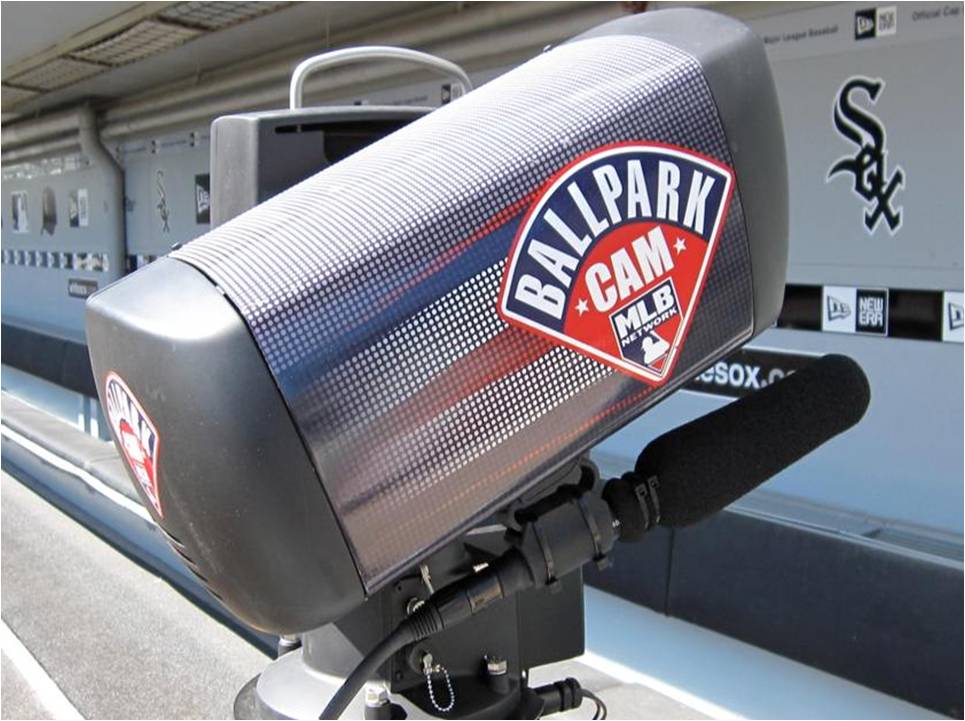
Ballpark Cam was introduced in 2009, with two cameras positioned in MLB ballparks across the country, delivering previously unseen on-field, pregame, and postgame content.
The Sports Emmy-nominated system is a network of cameras installed in multiple locations at all 30 MLB ballparks and controlled remotely from Secaucus. The system has provided MLBN with live access to batting practice, pre/postgame interviews, and updates of games in progress across all its studio programming.
“It allows us to be nimble and reactive to what’s happening on any given night [with live look-ins],” says Stone. “But, even more, I think it has provided an avenue to showcase the players’ personalities and their fun side [during interviews].”
The network has continued to make upgrades to the system each off-season. In addition to serving up camera feeds for its live shows, Ballpark Cam is also a vital contribution tool for bringing game feeds to Secaucus’s robust postproduction operation.
“I’d say Ballpark Cam is indirectly responsible for 90%-95% of the content on our air,” Stone explains. “Besides the actual camera, it’s how we get all of our content and feeds from the ballparks. It brings back a home and an away feed of every game, as well as home and away radio, Spanish radio. We get all of that in addition to all of the interviews that we are able to do.”
On the Horizon: Growing Into the MLB Content-Creation Hub
After 30,000 hours of programming and more than a dozen Sports Emmy Award statues for studio programming, MLB Network’s Secaucus operation is evolving from a traditional linear cable network into the “content-creation hub” for all of Major League Baseball.
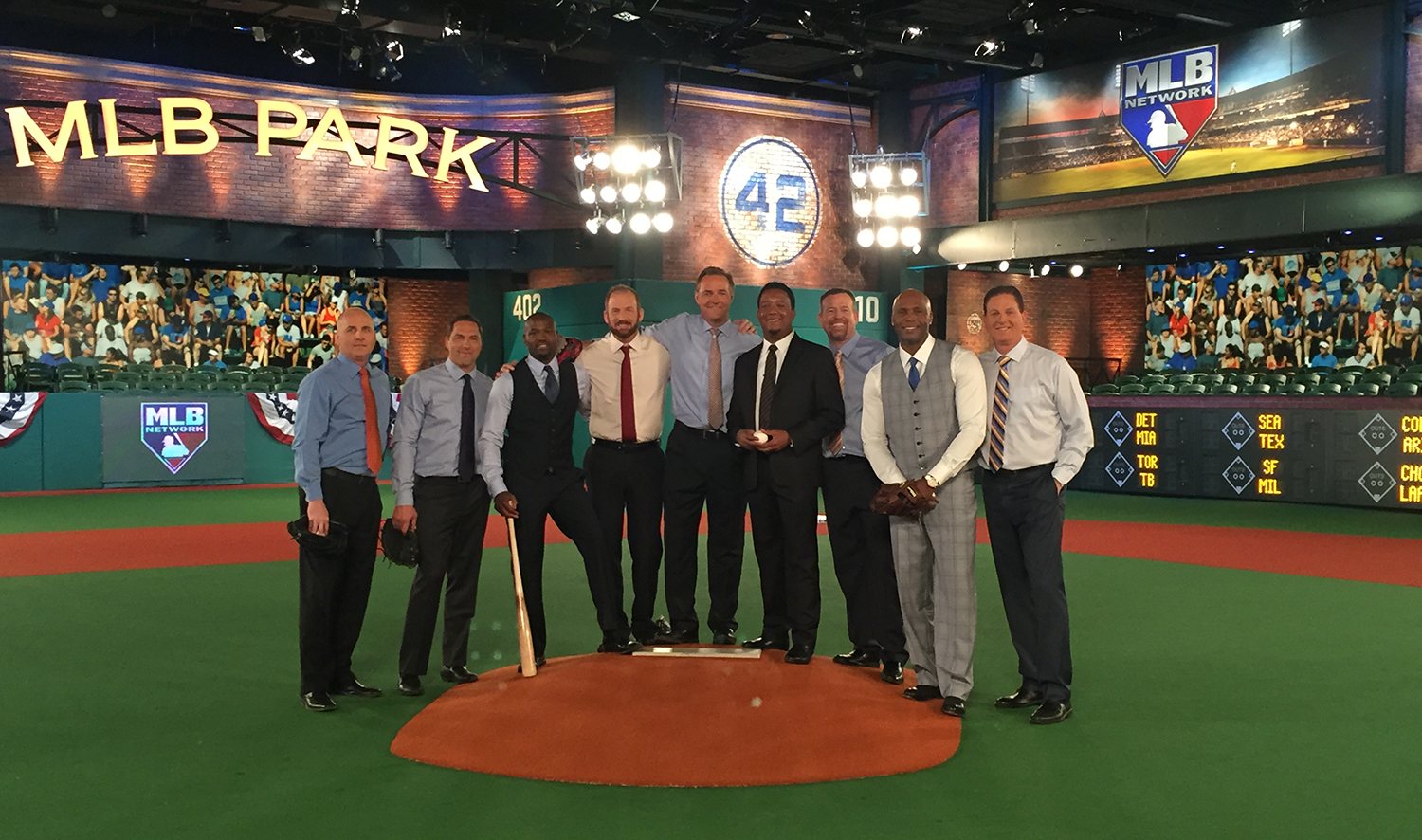
In 10 years, MLB Network has grown from two original studio shows to eight in its current lineup, and now boasts a roster of more than 40 on-air personalities, including three Hall of Famers.
Stone, who counts the unforgettable 2011 Wild Card Wednesday and the Game 1 of the 2009 World Series at Yankee Stadium among her favorite moments at MLB Network, says it is evolving more today than ever before. With current offseason projects that include a major postproduction-infrastructure upgrade and the launch of a second Ross Overdrive automated control room, Secaucus is as busy as ever.
“This facility is certainly becoming more of a content-creation hub for all of baseball as opposed to just a linear TV network.” says Stone. “Last year, we added Facebook, and we are partnering with DAZN this year, so there are many different platforms that we are now supporting. As we continue to grow, we’re looking for technology that gives us the flexibility to support media -content creation for all platforms.”
